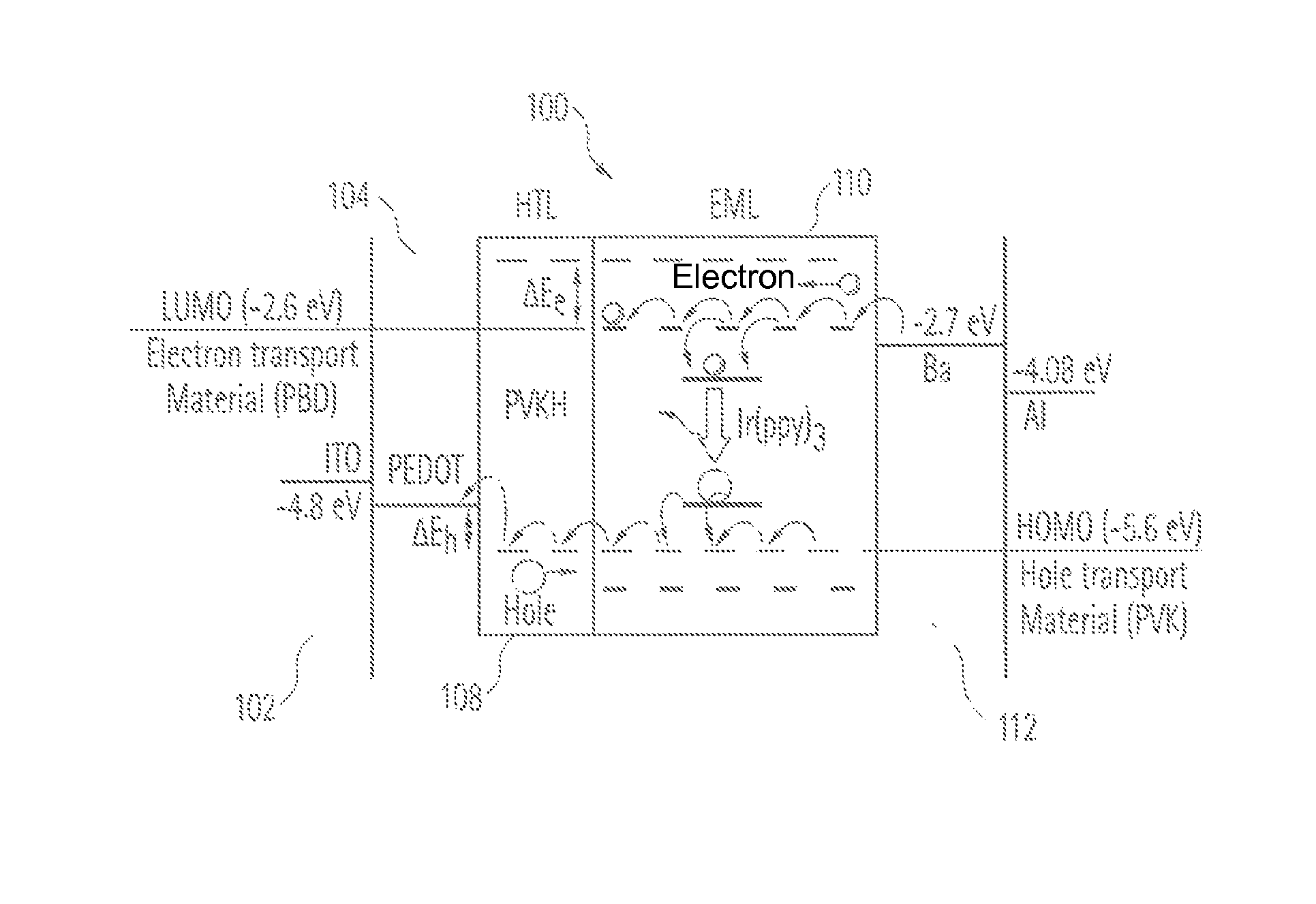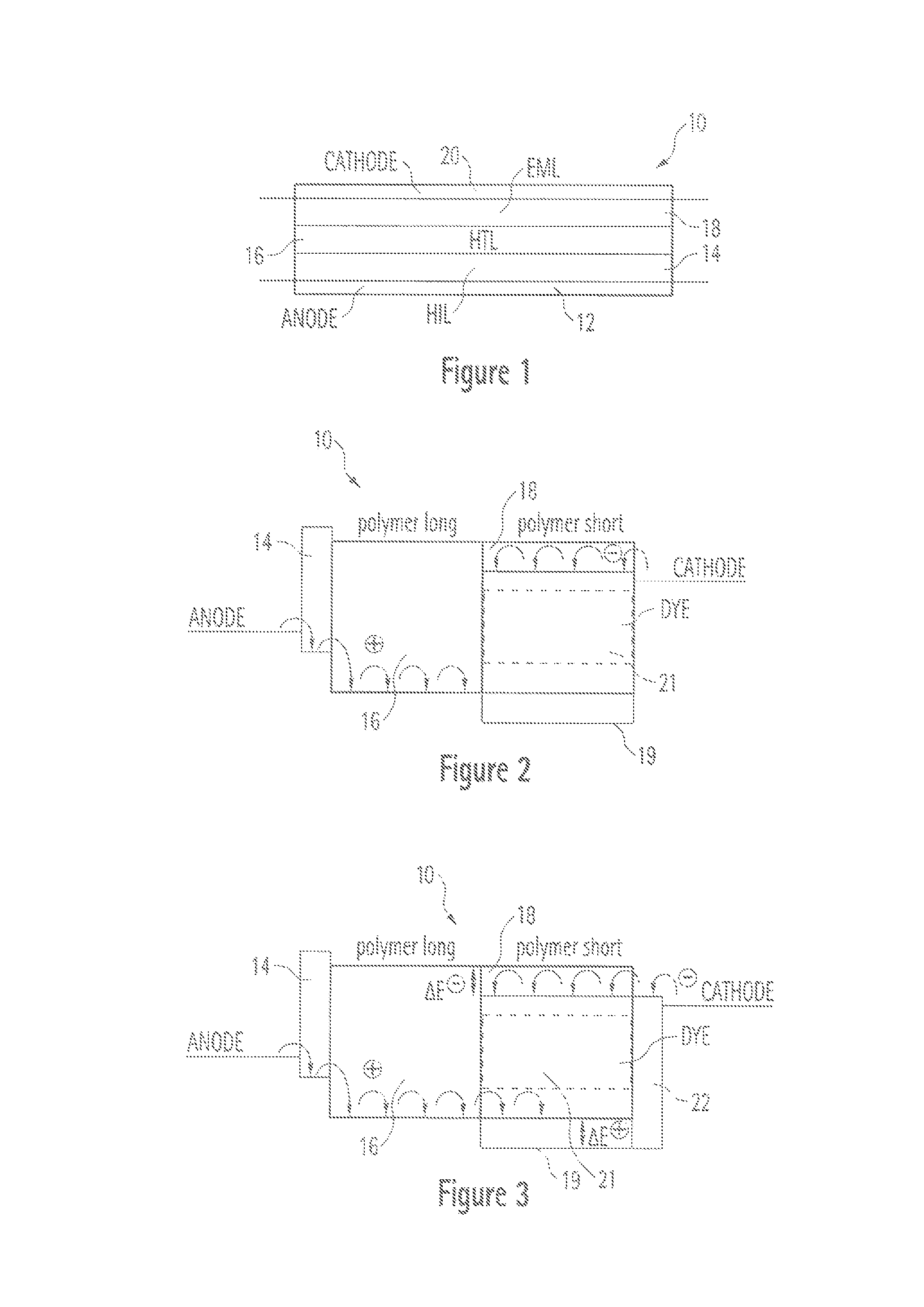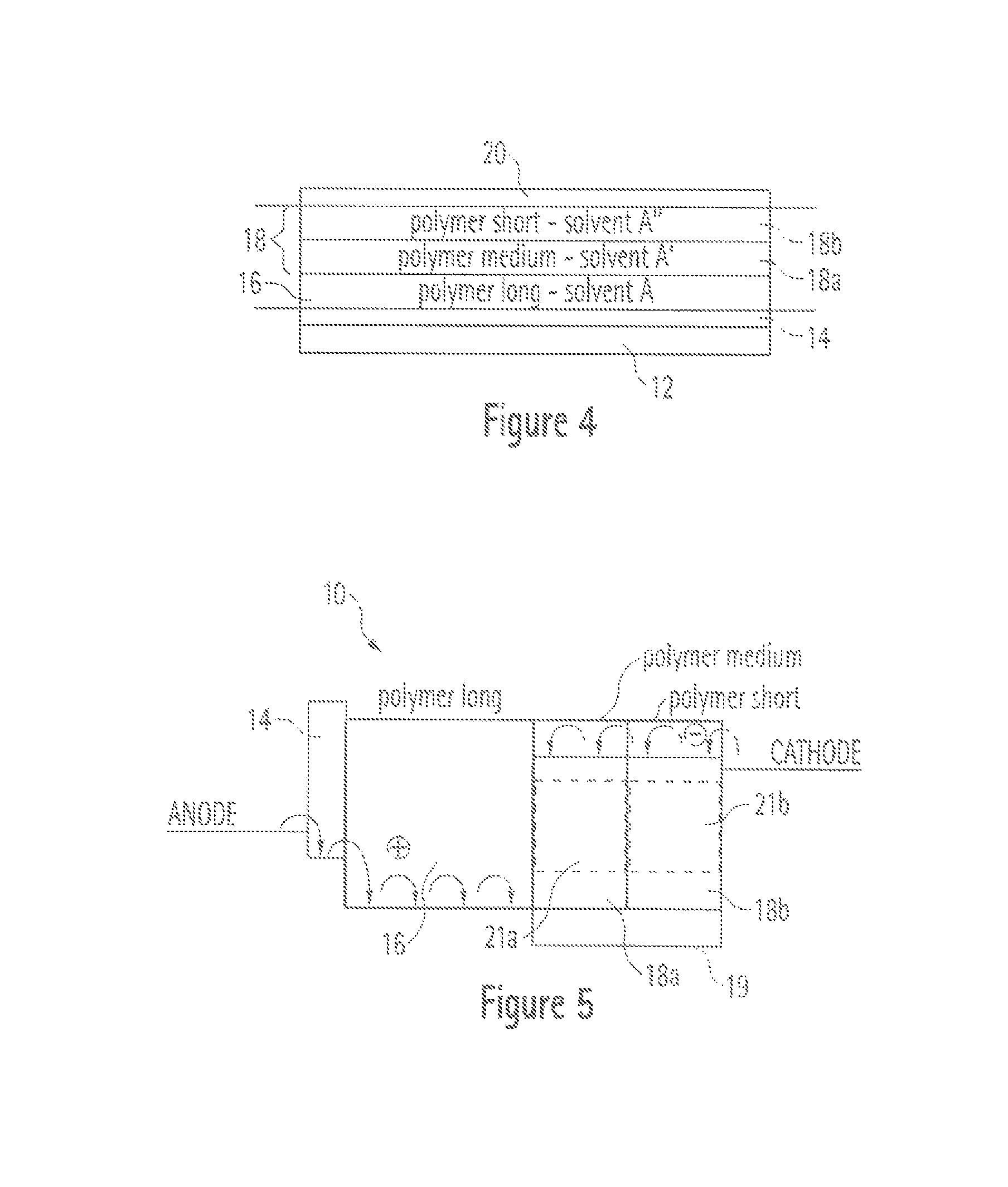Multilayer organic device
a multi-layer organic and device technology, applied in semiconductor devices, solid-state devices, electrical devices, etc., can solve the problems of high material wastage rate, inefficient single-layer organic devices for many applications, and difficulty in preparing multi-layer organic devices
- Summary
- Abstract
- Description
- Claims
- Application Information
AI Technical Summary
Benefits of technology
Problems solved by technology
Method used
Image
Examples
example 1
Bilayer Hole Injection Layer Device
[0085]Referring to the first example shown in FIG. 6, the device 100 comprises at first a glass substrate (not shown in FIG. 6) supporting a patterned anode made of indium tin oxide (ITO) 102. A hole injection layer 104 comprised of a conducting polymer poly(3,4-ethylenedioxy thiophene) / poly(styrenesulfonate) (PEDOT:PSS) 104 is deposited over the indium tin oxide 102. Further, over the PEDOT:PSS is deposited a layer of high average molecular weight poly (vinyl carbozole) (PVKH) 108 acting as a hole transport layer (HTL). Subsequent emission layer (EML) 110 comprises low molecular weight poly (vinyl carbozole) doped with an phosphorescent emitter species Ir(ppy)3. A Barium Aluminium cathode 112 is deposited over the emission layer 110 using evaporation techniques known in the art.
[0086]The device fabrication is described in detail the experimental section below. The device architecture and the schematic energy level diagrams for materials used in th...
example 2
Bi-Layers White Light Emitting Device
[0107]The structure of the second specific example of a multilayer organic device is shown in FIGS. 12 to 14. This embodiment forms a so called multicolours organic LED to generate white light for back-lighting or general lighting applications.
[0108]The white light generated in this embodiment comprises only two nonsaturated colours (blue-green and yellow emitters) instead of three saturated colours (blue, green and red). The device structure comprises a similar layer structure order to that described in Example 1. The hole transport layer (HTL) in the first example has now been used to form a yellow emissive layer (EML1) which comprises a mixture of host material (PVKH), electron transport material and yellow emissive dopant spin coated from chlorobenzen solution. The host material (PVKH) is preferably mixed with low concentration electron transport material <20% w / w, to avoid losing PVKH resistance to the second layer solvent. The second layer ...
PUM
| Property | Measurement | Unit |
|---|---|---|
| Thickness | aaaaa | aaaaa |
| Length | aaaaa | aaaaa |
| Electric charge | aaaaa | aaaaa |
Abstract
Description
Claims
Application Information
 Login to View More
Login to View More - R&D
- Intellectual Property
- Life Sciences
- Materials
- Tech Scout
- Unparalleled Data Quality
- Higher Quality Content
- 60% Fewer Hallucinations
Browse by: Latest US Patents, China's latest patents, Technical Efficacy Thesaurus, Application Domain, Technology Topic, Popular Technical Reports.
© 2025 PatSnap. All rights reserved.Legal|Privacy policy|Modern Slavery Act Transparency Statement|Sitemap|About US| Contact US: help@patsnap.com



